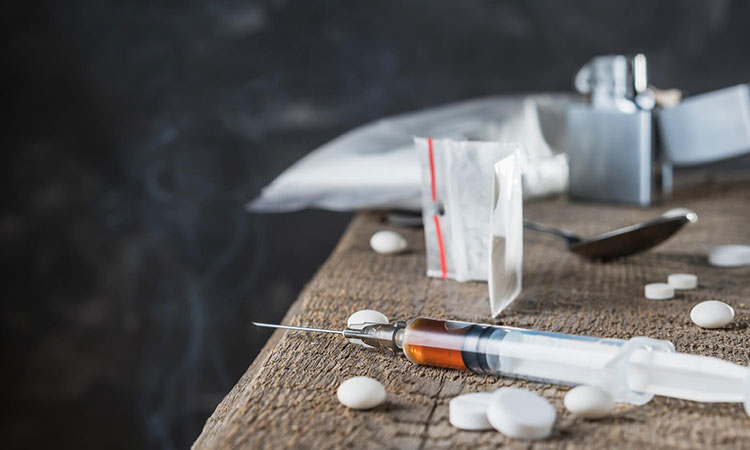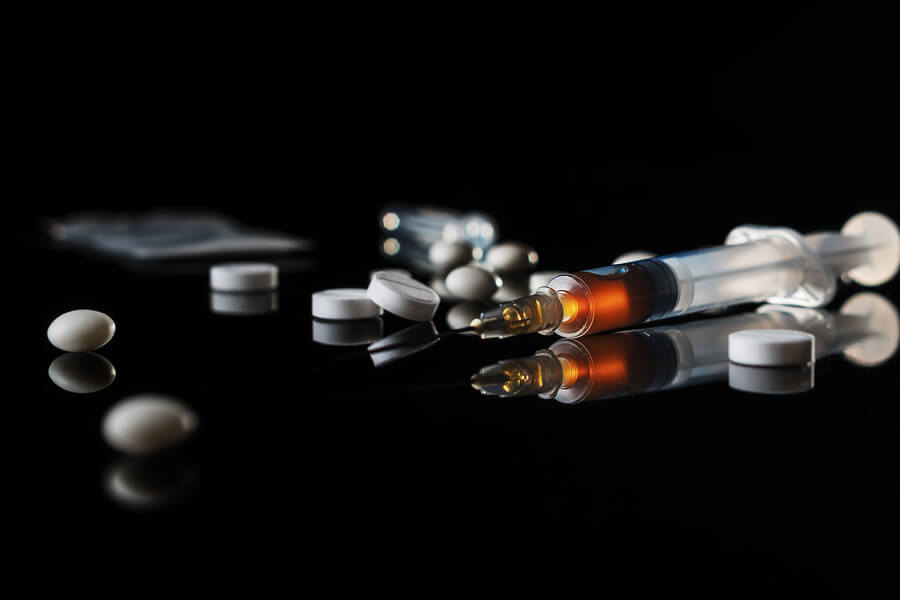
List of Schedule I Drugs – The U.S. government controls the creation, possession, distribution, and use of certain substances that are considered to have a potential for abuse and addiction. These drugs are also known as controlled substances, and they range from illegal street drugs, such as heroin, to legal medication that requires a prescription to obtain.
In 1970, the Controlled Substances Act was passed by Congress. This legislation was meant to classify drugs by two main criteria: their potential for abuse and dependency and accepted medical use. The substances were categorized into five distinct schedules, and also defined was significant legal consequences for producing, distributing, or diverting any of those substances outside of the new legal structure.
What is a Schedule I Drug?
According to the Drug Enforcement Administration, Schedule I substances do not possess known medical benefits and have a very high potential for addiction. Commonly known as “street drugs,” some of these, such as heroin, are considered to be among the most dangerous of all controlled substances.
List of Schedule I Drugs
The following is a complete list of Schedule I drugs:
Heroin (Diacetylmorphine)

Heroin is an opioid drug derived from morphine, a natural substance taken from the pod of opium poppy plants grown in parts of Asia, Mexico, and Colombia. Heroin can be a white or brown powder, or a black sticky substance the aptly named black tar heroin.
Heroin can be injected, sniffed, snorted, or smoked. The desired effects are euphoria and profound relaxation and sedation.
Marijuana (cannabis, THC)
The term marijuana refers to all parts derived from the Cannabis sativa or Cannabis indica plant that contain the mind-altering chemical THC and other similar compounds, including the dried leaves, flowers, seeds, and stems. Desired effects include euphoria and relaxation.
People more commonly smoke marijuana in hand-rolled cigarettes (joints), pipes, water bongs, or blunts (emptied cigars.) To avoid inhaling smoke, some people use vaporizers. People also mix marijuana with food such as brownies, cookies, or candy, or brew it as a tea.
Hallucinogens (LSD, Psilocybin, and Peyote)
Classic hallucinogens are believed to produce perception-altering effects by acting on neural circuits in the brain that use the neurotransmitter serotonin. Consuming hallucinogenic drugs can cause the user to see images, hear sounds, and feel sensations that appear to be real to them but do not exist.
The effects of hallucinogens such as LSD are often described as drug-induced psychosis, or the distortion or disorganization of a user’s ability to recognize reality, think rationally or communicate clearly with others.
Short-term effects of hallucinogens include the following:
- Hallucinations, including distortions in seeing, hearing, touching, or smelling things or perceiving things that do not actually exist
- Intensified feelings and sensory experiences, such as brighter colors
- Mixed senses (“seeing” sounds or “hearing” colors)
- Changes in sense or perception of time
- Increased energy and heart rate
Specific short-term side effects of LSD, psilocybin, and peyote include the following:
LSD
- Elevated heart rate
- High blood pressure
- Elevated body temperature
- Dizziness
- Sleepiness
- Loss of appetite
- Dry mouth and sweating
- Numbness and weakness
- Tremors
- Impulsiveness
- Emotional volatility
Psilocybin
- Feelings of relaxation
- Nervousness and panic
- Paranoia
- Introspective/spiritual experiences
Peyote
- Elevated body temperature and heart rate
- Uncoordinated movements
- Profound sweating and flushed skin
MDMA (3,4-methylenedioxymethamphetamine or “ecstasy”)
Methylenedioxy-methamphetamine (MDMA) is a synthetic drug that alters mood and perception, including the awareness of nearby objects and conditions. MDMA is chemically similar to both hallucinogens and stimulants, and thereby produces feelings of euphoria, increased energy, emotional warmth/empathy, and distorted sensory and time perception.
People who take MDMA usually consume it as a capsule or tablet, although some swallow it in liquid form or snort the powder. Some people use MDMA in combination with other substances such as alcohol or marijuana.
Other List of Schedule I Drugs

GHB (Gamma-hydroxybutyric Acid)
GHB (Gamma Hydroxybutyrate) is a central nervous system depressant commonly referred to as a “date rape” drug. GHB is frequently abused by adolescents and young adults at bars, parties, clubs, and raves. It is an odorless, colorless drug that may be mixed with alcohol and given to unsuspecting victims before sexual assaults.
Euphoria, increased libido, and peacefulness are all reported positive effects of GHB use. Adverse effects include sweating, loss of consciousness, nausea, hallucinations, amnesia, and coma.
Of note, Xyrem (sodium oxybate) is a brand name prescription drug made from the sodium salt of gamma-hydroxybutyrate and is likewise highly regulated. Xyrem is approved by the Food and Drug Administration for the treatment of narcolepsy but requires patient enrollment in a restricted access program.
Synthetic marijuana (Spice, K2)
Synthetic cannabinoids are mind-altering chemicals that are either sprayed on dried, shredded plant material for smoking or available in a liquid form that can be vaporized and inhaled.
These chemicals are referred to as cannabinoids because they are similar to chemicals in marijuana. Due to this similarity, synthetic cannabinoids are sometimes misleadingly called “synthetic marijuana,” and they are often marketed as safe alternatives to the drug. In fact, they are not safe and can affect the brain more intensely than real marijuana.
The most common way people use synthetic cannabinoids is to smoke the dried plant material, but users may also mix the sprayed plant material with marijuana or brew it as tea. Others buy the products as liquids to vaporize in e-cigarettes.
Methaqualone (Quaalude)
Quaaludes (methaqualone) are central nervous system depressants similar to barbiturates. Methaqualone is a sedative-hypnotic drug that also reduces anxiety. Quaaludes that are sold for recreational use now are synthesized in illegal laboratories.
In prescribed doses, quaaludes induce relaxation, sleepiness and sometimes a feeling of euphoria. These qualities are the reason why it was originally believed to be a useful sedative and anti-anxiety medication. They have since fallen out of use for medical purposes, however, and are now placed on the list of schedule I drugs.
Khat (Cathinone)
Khat is a stimulant similar to amphetamines that consist of leaves from the Catha edulis shrub found in Africa and southern Arabia. It contains a number of chemicals, including two controlled substances, cathinone and cathine. Desired effects of the khat leaf include relief from depression and fatigue. It is also sometimes used to reduce the need for food and sleep.
Khat looks like green and leafy shredded tobacco, and could easily be mistaken for marijuana. It is typically chewed like tobacco and can also be smoked.
Bath Salts (methylenedioxypyrovalerone or MDPV)
Synthetic cathinones, commonly known as “bath salts,” are synthetic stimulants chemically related to cathinone, a substance found in the khat plant. Human-made versions of cathinone are often much stronger than the natural product and, in some cases, may be very dangerous.
Synthetic cathinones typically take the form of a white or brown crystal-like powder and are sold in plastic or foil packages labeled “not for human consumption.” Users may swallow, snort, smoke, or inject synthetic cathinones.
Treatment for Drug Addiction
Drug abuse and addiction can be devastating conditions that adversely impact the health and well-being of those who suffer. Persons struggling with addiction are urged to participate in a rehab program that focuses on research-based treatments such as behavioral therapy, counseling, and group support.
Our center employs compassionate addiction professionals who render these services with care and expertise. We provide clients with the resources, education, and support they need to maintain abstinence indefinitely.
We can help you reclaim your life and begin to experience the happiness and harmony you deserve! Contact us today to find out how we can help you forge your path to recovery!